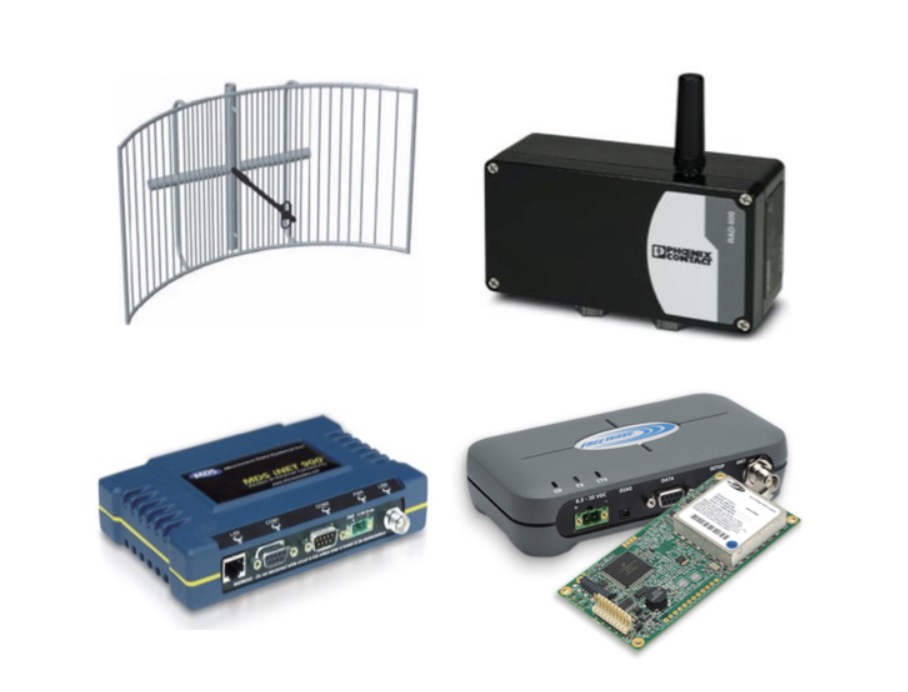Industrial Antennas & Radios

Antennas are devices that redirect energy they receive from a transmitter, providing more energy in one direction versus all other directions. Antennas can generally be classified as omnidirectional and directional.
Industrial radios are used for wireless transfer of data. Each model of radio has its own communication protocol which does not allow communication across brands. The three most common data radios are Serial, IO and Ethernet.
Serial radios have one master radio that communicates with slave radios in the same network. Each network can have only one master radio that polls the slave radios one by one. Each slave radio has to wait for the master radio to poll it in order to send and receive data. For this reason, serial radios are a slower form of communication and could take several minutes to communicate.
IO radios are designed to transmit and receive small amounts of data and allow various signal types to be wired directly into the radio. In most cases, wireless IO radios must be used in pairs, where one radio transmits the data and the other radio receives the data.
Ethernet radios have an Access Point radio in a network that communicates to a number of remote radios. Each network has only one Access Point radio communicating to a number of remote radios sending and receiving data at any time without being polled. Data is sent in packets over several frequencies resulting in faster communication.
Industrial Control Panels In Depth Look Part 5: Communication
Industrial radios are often used when communication over long distances is required, which is one reason why most SCADA systems utilize them. An example of use would be to monitor data from multiple locations within a city where all data is aggregated back to a central control room. Another example would be the monitoring of widely dispersed sites in an oil field. The radio allows communication over long distances without communication cables that can be costly or impossible to install. Depending on the type of radio that is being used in the panel and the communications protocol it is using, it may be connected directly to the PLC or through the network switch.
In order to communicate, the radio also needs an antenna, usually mounted somewhere on the building in which the control panel is installed or possibly on a conduit in cases where the panel is outdoors. The type of antenna that is used will vary with the radio frequency, the geography of the area and the location of other radios within the network. The two most common types of antenna are either Yagi and Omni antennas.

